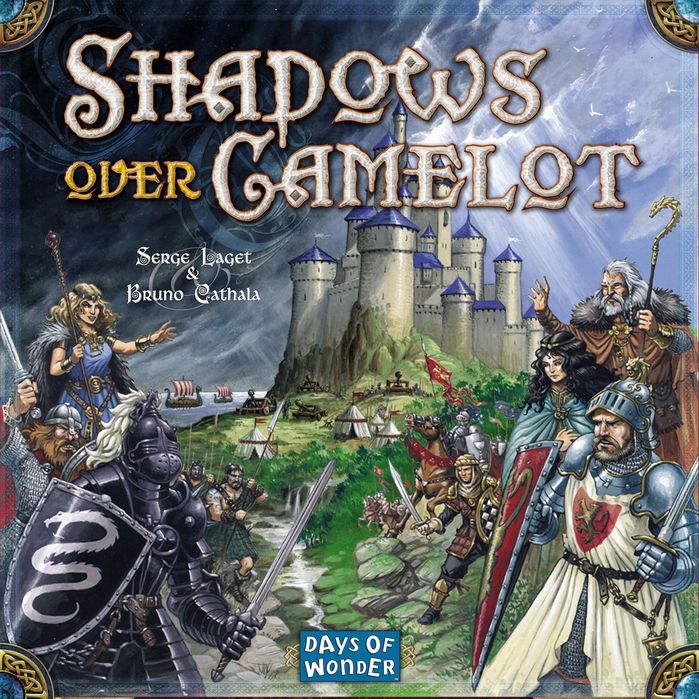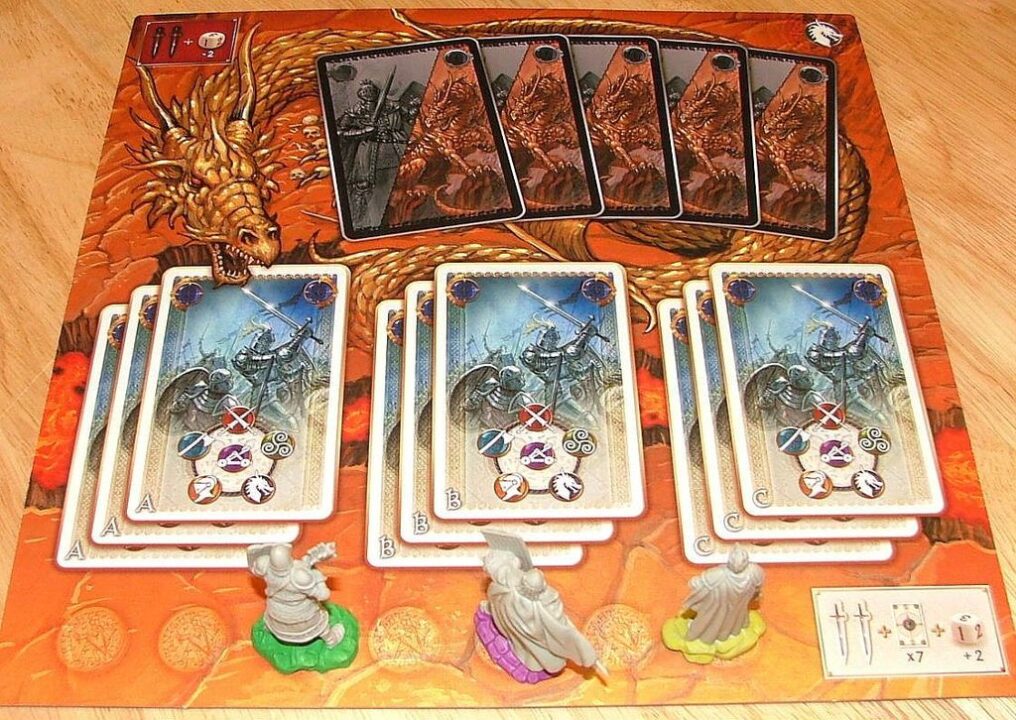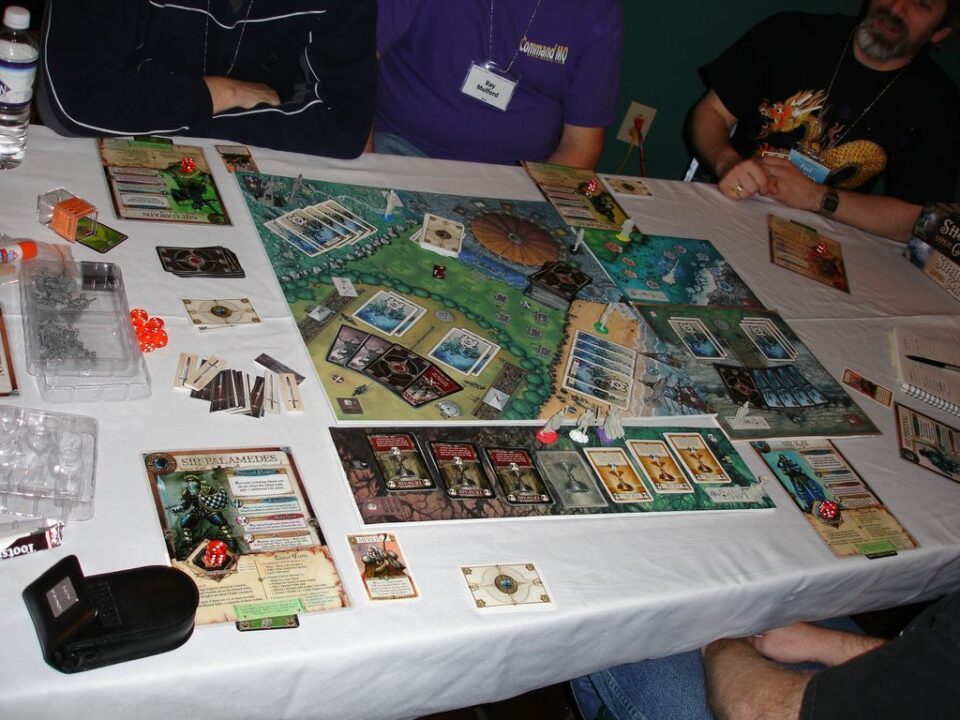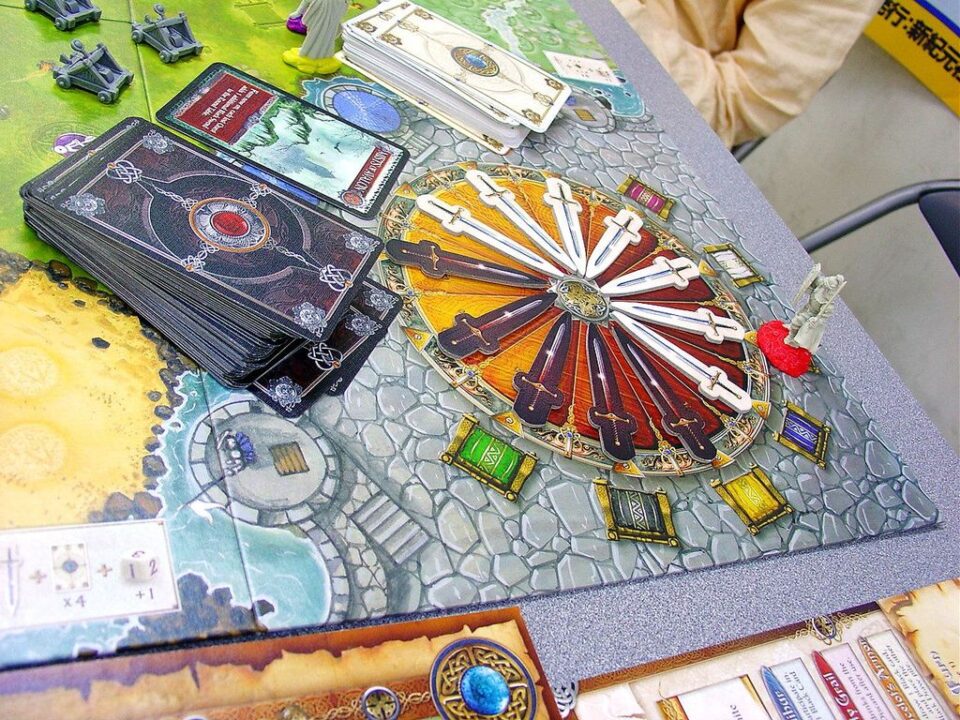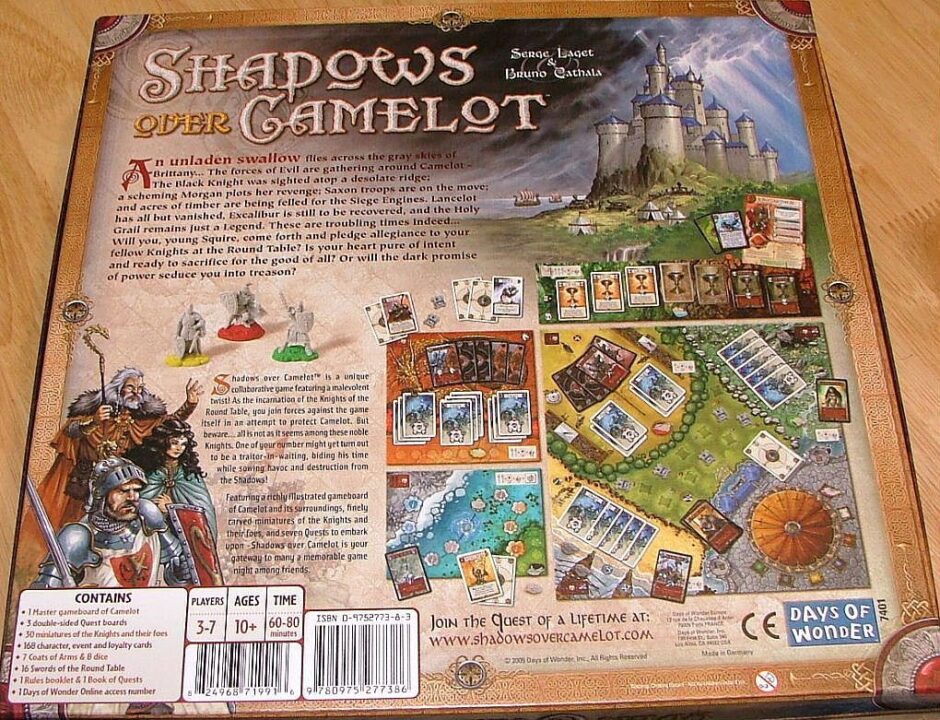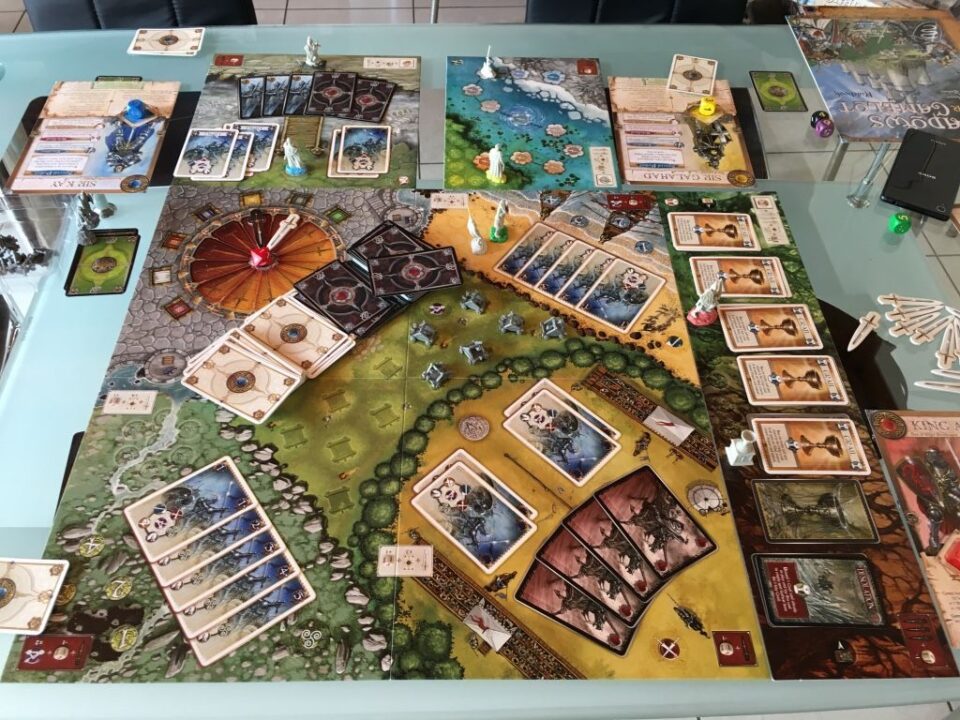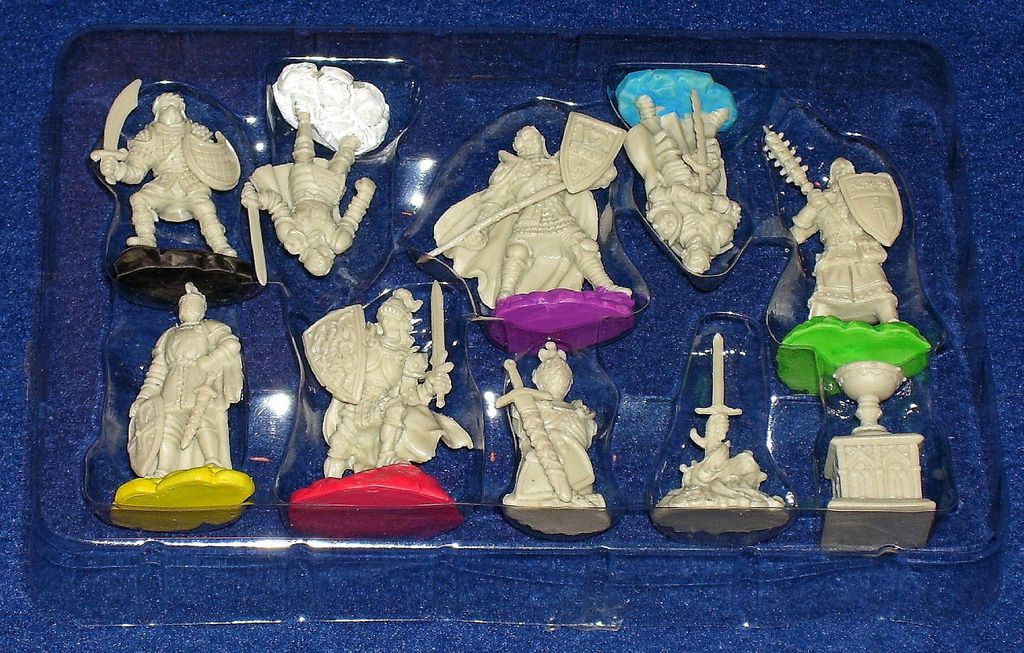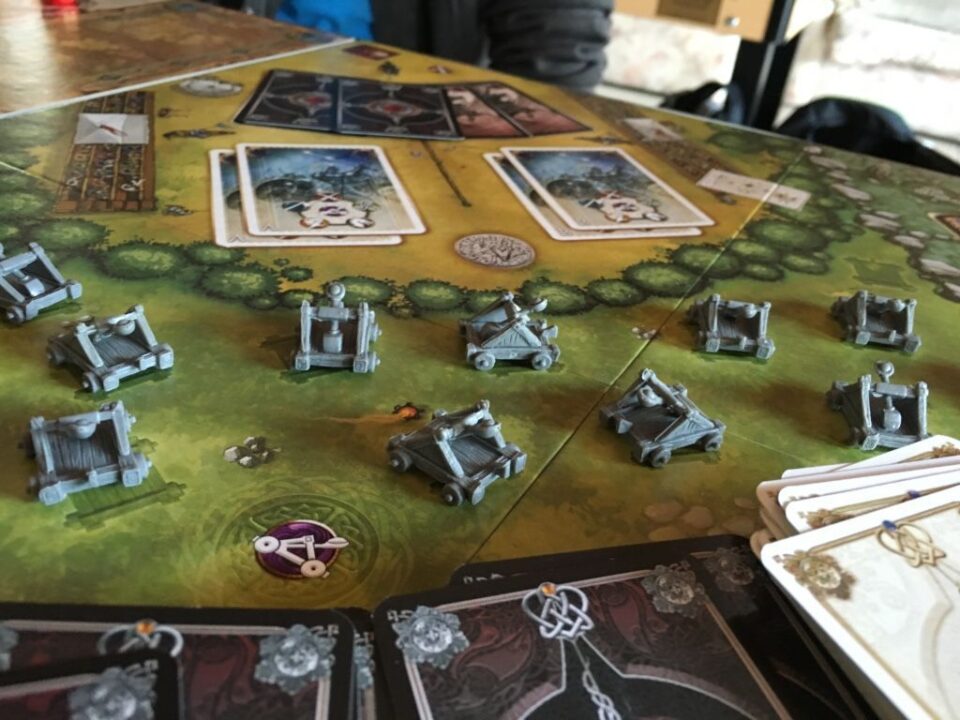Overview
Welcome to the mystical realm of King Arthur’s Court, where courage and cunningness come together in ‘Shadows over Camelot‘. In this review, we’re delving deep into the cavernous dungeon of this cooperative, yet cunningly competitive game. From the knights at the round table to the ever-lurking possibility of a traitor, this game enwraps players in a cloak of medieval strategy and suspense. Get ready to raise your sword as we explore the virtues and vices of ‘Shadows over Camelot’.
How It Plays
Setting Up
Before embarking on your adventures in ‘Shadows over Camelot’, you’ll assemble the legendary Round Table by placing the impressive game board at the center of the playing area. Each player selects a knight, taking the corresponding miniature, coat of arms, and loyalty card – which is secretly drawn to determine if there’s a traitor in your midst. Distributed among the knights are a deck of white cards representing various items, allies, and actions, along with the powerful Merlin cards, as the game prepares to challenge your band of knights right from the start.
Gameplay
The gameplay is deftly designed around cooperative mechanics, maneuvering around Camelot and tackling quests such as the search for the Holy Grail or battling the Black Knight. Knights take turns drawing black cards that foster adversity, followed by performing heroic actions like playing white cards to progress in quests, or directly confronting siege engines that threaten Camelot. Communication and strategy are pivotal, as resources are scarce, and the potential of a traitor looms, sowing distrust among the loyal.
Winning the Game
Victory in ‘Shadows over Camelot’ is no simple feat. The knights must complete more quests successfully than those that culminate in failure. If seven white swords adorn the Round Table after prevailing in quests, Camelot and its knights can celebrate their ability to quell the lurking darkness. However, should the black swords outnumber the white, or if Camelot falls to siege engines or specific conditions of overwhelming darkness, defeat will claim the hearts of the players. Each game narrates its own saga of camaraderie, bravely, and sometimes betrayal.
Want to know more? Read our extensive strategy guide for Shadows over Camelot.
A Fellowship Forged in Shadows
The essence of camaraderie often springs from tackling obstacles as a group, something Shadows over Camelot exemplifies with aplomb. Cooperative play dynamics are the game’s beating heart, weaving together each individual’s decisions into a unified campaign against the game’s relentless pressure. In my own playthroughs, as we formed hasty plans around the cluttered Round Table, anyone’s heroic success or blunder became a shared moment.
Unity Against Darkness
As we ventured forth in our adventures, it wasn’t just our knights facing down the encroaching shadows, but us as players, united. These shared trials fostered a bond that managed to outshine the pounding threat of siege engines crowding Camelot’s borders.
Contours of Collective Decision-Making
The game’s demand for strategy concerning when to hold firm and when to lend aid to a beleaguered comrade resonated throughout each session.
Immersive as the game’s promised unity is, don’t forget the spice that’s about to be discussed: the treachery that is the Traitor mechanic tension.
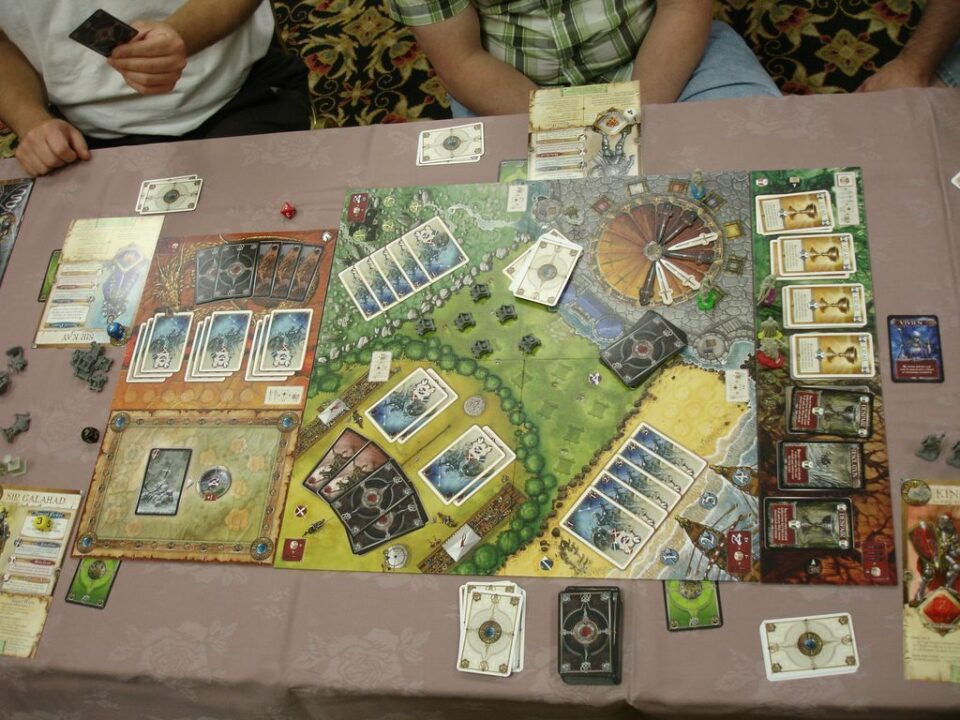
The Mistrust that Binds Us
In my many play-throughs for the Shadows over Camelot Review, the traitor mechanic always comes up as a critical discussion point. It’s a paradoxical glue that invokes tension yet builds camaraderie. Initially, you start with implicit trust, sharing resources, and strategizing openly.
Whispers of Betrayal
However, with each move that slightly deviates from the plan, suspicion grows. As part of my reviews, I can’t help but chuckle recalling the accusations flying across the table as one team member makes an unexpected move. It’s this social dynamic that turns the game from a simple task completion exercise to a complex psychological dance.
Unmasking the Traitor
The moment of the traitor’s reveal is often a game highlight – revealing not only the traitor but the collective guesswork of the group. It’s an exhilarating moment of triumph or an astonishing plot twist, depending on which side you’re on.
As we prepare to delve into the nerve-wracking anticipation of who’s wearing the traitorous cloak, let us not forget the paths to victory await us, painting a picture of intricate strategy in the next section about Quest completion strategies.
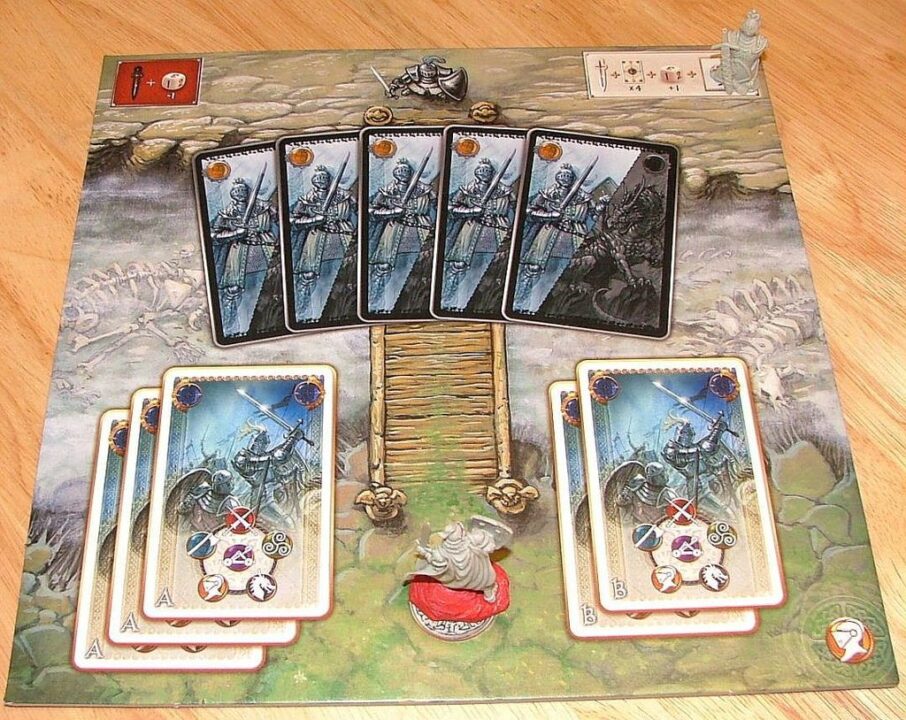
Mastering the Art of Questing
In every Shadows over Camelot review session my group brings to the round table, the pivotal moments often revolve around the quest completion strategies we adopt. A synergy among knights is essential, which charts the path to victory or defeat. Choosing when to hoard resources for a collective showdown or go solo is an ongoing predicament that tests our tactical acumen.
Collaboration is ideal, but there’s also the thrill of a critical solo turn—a leap of in-game faith—and, oh, how glorious it is when it pays off! In sum, the choices and strategies breathe vibrancy into recounts of heroic ventures or valiant missteps. It’s this tailored complexity that endorses Shadows over Camelot: a tapestry of risk and reward I heartily recommend.

Conclusion
In wrapping up this review, ‘Shadows over Camelot’ impresses with its blend of cooperative tactics and the undercurrent of betrayal from the traitor mechanic. The intricacies of quest strategies demand players to communicate and adapt, making every game a fresh odyssey into Arthurian legend. It’s not just a board game; it’s a journey of camaraderie with a spicy dash of suspicion that ensures no two playthroughs are ever the same. Undoubtedly, for those who love contingent planning amidst trust’s fragility, this game is an exceptional addition to the gaming shelf. ‘Shadows over Camelot’ not only gets a shining recommendation for its mechanics and group play dynamics, but it also occupies a special place for the memories it creates amongst friends at the gaming table.

